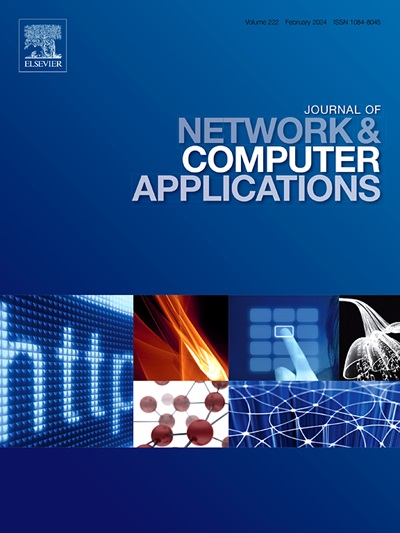MW3F: Improved multi-tab website fingerprinting attacks with Transformer-based feature fusion
IF 7.7
2区 计算机科学
Q1 COMPUTER SCIENCE, HARDWARE & ARCHITECTURE
引用次数: 0
Abstract
Website Fingerprinting (WF) attacks compromise the anonymity of Tor by analyzing traffic patterns. Multi-tab WF attacks, which aim to identify multiple categories of websites from obfuscated traffic, have achieved significant progress. However, existing methods often fail to fully exploit the relationships between traffic features. On the one hand, splitting-based methods have complex processes that result in the loss of local traffic features. On the other hand, end-to-end methods process complete traffic but perform poorly when relying on a single feature. To address these challenges, this paper proposes an effective Multi-tab Website Fingerprinting attack with Transformer-based Feature Fusion named MW3F. Specifically, MW3F first extracts high-level traffic features, including direction and inter-packet time. Subsequently, These new representations are fused using the multi-head self-attention, which captures both local dependencies and global interactions. Finally, to identify website categories adaptively, MW3F incorporates learnable label embeddings to probe and pool class-related features. Each website category prediction is associated with a corresponding label embedding. We evalute MW3F against state-of-the-art multi-tab WF attacks in both multi-tab and defense scenarios. In the closed-world scenario, MW3F achieves a mean average precision (mAP) of over 90% across all tab settings, outperforming the strongest baseline, ARES, by 7% in the 5-tab setting. In the defense scenario, MW3F achieves approximately 90% mAP against WTF-PAD and Front defenses, demonstrating superior performance and exceptional robustness.
MW3F:改进了基于transformer的特征融合的多标签网站指纹攻击
网站指纹(WF)攻击通过分析流量模式损害Tor的匿名性。多标签WF攻击,旨在从混淆的流量中识别多个类别的网站,已经取得了重大进展。然而,现有的方法往往不能充分利用交通特征之间的关系。一方面,基于分割的方法过程复杂,导致局部交通特征丢失。另一方面,端到端方法处理完整的流量,但在依赖单个特性时表现不佳。为了解决这些问题,本文提出了一种有效的基于变压器特征融合的多标签网站指纹攻击方法MW3F。具体来说,MW3F首先提取高级流量特征,包括方向和包间时间。随后,使用多头自关注将这些新的表征融合在一起,从而捕获局部依赖和全局交互。最后,为了自适应地识别网站类别,MW3F采用可学习的标签嵌入来探测和集合与类别相关的特征。每个网站类别预测都与相应的标签嵌入相关联。我们评估了MW3F在多标签和防御场景下对抗最先进的多标签WF攻击的能力。在封闭世界场景中,MW3F在所有选项卡设置中实现了超过90%的平均精度(mAP),在5选项卡设置中比最强基线ARES高出7%。在防御场景中,MW3F针对WTF-PAD和Front防御实现了大约90%的mAP,展示了卓越的性能和出色的鲁棒性。
本文章由计算机程序翻译,如有差异,请以英文原文为准。
求助全文
约1分钟内获得全文
求助全文
来源期刊

Journal of Network and Computer Applications
工程技术-计算机:跨学科应用
CiteScore
21.50
自引率
3.40%
发文量
142
审稿时长
37 days
期刊介绍:
The Journal of Network and Computer Applications welcomes research contributions, surveys, and notes in all areas relating to computer networks and applications thereof. Sample topics include new design techniques, interesting or novel applications, components or standards; computer networks with tools such as WWW; emerging standards for internet protocols; Wireless networks; Mobile Computing; emerging computing models such as cloud computing, grid computing; applications of networked systems for remote collaboration and telemedicine, etc. The journal is abstracted and indexed in Scopus, Engineering Index, Web of Science, Science Citation Index Expanded and INSPEC.
 求助内容:
求助内容: 应助结果提醒方式:
应助结果提醒方式:


